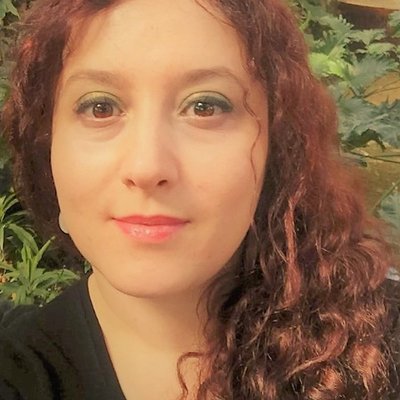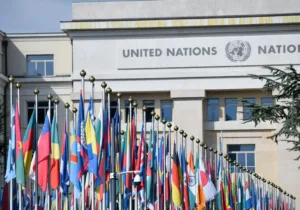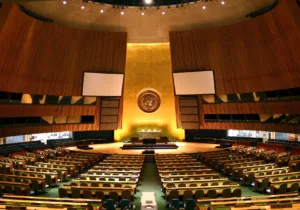While the world’s attention is fixated on the Russian invasion of Ukraine, Azerbaijan has escalated its aggression against the Armenian land and people of Artsakh, also known as Nagorno-Karabakh, in the South Caucasus.
On March 24, the Azerbaijani Armed Forces violated the line of contact in the Parukh village in Artsakh and invaded. Women and children in the village of Khramort were also being evacuated for security reasons, the Artsakh Information Center reported.
Meanwhile, Artsakh is on the verge of a humanitarian catastrophe that Azerbaijan intentionally created.
From March 8 to March 19, over 100,000 Armenians in Artsakh were deprived of gas, heat, and hot water due to Azerbaijan’s deliberate disconnection of the gas supply to the entire territory of Artsakh. The weather in the region is at freezing levels (hovering between -10-0° C, or 14-32º F.). The allegedly damaged portion of the gas pipeline to Artsakh remains under Azerbaijani control. However, for 11 days, Azerbaijan did not allow the problem to be assessed and repaired. On March 16, Armenian officials announced that Azerbaijan decided to permit the gas pipeline to Artsakh to be fixed, and on March 19, the pipeline was finally repaired. Yet, two days later, on March 21, Azerbaijan once again cut off gas supply to Artsakh and the people there remain deprived of natural gas and heat ever since.
Azerbaijan’s military aggression has also been on the rise for several months. According to reports from the ground, Azerbaijan intensively fires toward Artsakh villages, threatens residents, and hinders their agriculture work. The European Union is “concerned” over the latest ceasefire violations and the disruption of natural gas supply, Toivo Klaar, the EU’s special representative for the South Caucasus and the crisis in Georgia, told Radio Free Europe/Radio Liberty’s Armenian Service.
In a speech posted on March 15 on its Twitter account addressing the international community, the human rights ombudsman of Artsakh, Gegham Stepanyan, said, “Thousands of Armenians living in Artsakh are regularly subjected to terroristic and genocidal acts carried out by Azerbaijan every day.”
All of these human rights abuses are taking place almost daily while Artsakh is still trying to mend its wounds from the unprovoked and unjustified war that Azerbaijan launched against it in 2020.
From September 27 to November 9, 2020, Azerbaijan—with the support of its closest ally, Turkey—committed many atrocities and bombed towns and villages across Artsakh, including homes and maternity hospitals. The actual number of deaths is still unknown, but around 5,000 Armenians were reportedly killed, and approximately 90,000 were forcibly displaced from their ancestral lands.
To help Azerbaijan during its war against Armenians, Turkey engaged in large-scale recruitment and transfer of Syrian mercenaries to Azerbaijan. This was confirmed by a United Nations report issued on November 11, 2020.
The Azeri government has not been brought to account for the war crimes and crimes against humanity it committed during the 2020 war, such as intentionally attacking civilians, murder, torture, taking of hostages, and extensive destruction of property. For instance, two Azeri air raids severely damaged the Ghazanchetsots Cathedral in Shushi, also known as the Holy Savior Cathedral, on October 8. According to official data, shelling, rockets, and airstrikes by the Azerbaijani armed forces damaged at least 71 schools and 14 kindergartens in Artsakh.
More than a year after the signing of the ceasefire agreement and the suspension of the war, Azerbaijan continues its aggression and threats against the indigenous Armenians of Artsakh and Armenia.
According to journalist Anush Ghavalyan, who is based in Artsakh’s capital Stepanakert, Azerbaijani armed forces are terrorizing residents of certain villages in the territory. The Azeris say they will use military force if the Armenians do not leave the villages. Azeri forces have targeted the villages Khramort, Khnapat, Parukh, and Nakhijevank of Askeran region, and Taghavard, Karmir Shuka, Norshen, and Khnushinak of Martuni region. Ghavalyan told Providence:
Azerbaijan is aiming to finish the ethnic cleansing of Nagorno-Karabakh. They openly can’t go for a full-blown war today since Russian peacekeepers are deployed here. So they do everything to disrupt normal life and make people leave their homeland. Thus, they combine shootings and threats of the use of force with humanitarian issues like cutting off gas, mobile, and internet connections, or water, etc., to ruin the lives of those living in Artsakh.
According to the official Twitter account of the Artsakh/Karabakh human rights ombudsman, examples of recent Azeri military escalation, some of which have caused deaths and injuries of Armenians, include:
- On March 9 and 10, the Azerbaijani armed forces regularly violated the ceasefire with the use of firearms of various calibers in the village of the Khnushinak in the Martuni region, and the village of the Khramort in the Askeran region. On March 10, Suren Baghdasaryan, 51, a resident of the village of Khramort, was wounded in the back while doing agricultural work in the yard of his residential house.
- On March 7, Azerbaijani forces opened fire on Armenian soldiers in several spots along the buffer zones, which resulted in the death of at least one Armenian soldier. Courtney E. Austrian, the deputy chief of mission at the US Mission to the Organization for Security and Cooperation in Europe (OSCE), issued a statement on the killing: “The United States mourns the death of the Armenian servicemember Hrach Manasaryan on March 7.”
- On March 4, Azerbaijani armed forces opened fire at the village of Norshen. They intimidated civilians by threatening the use of force and called on them in Armenian to leave their homes.
- On February 26, Armenian schoolchildren filmed a video of Azerbaijani armed forces threatening them and demanding they leave the village of Khramort in the Askeran region.
- On February 18, Azerbaijani armed forces violated the ceasefire and opened fire at the residential houses of the village of Taghavard in the Martuni region.
- On February 11, Azerbaijani armed forces fired in the direction of the residential homes in the villages of Karmir Shuka and Taghavard in the Martuni region. Three children and a woman were inside their house at the time woke up to the shooting.
These acts of violence appear to be a continuation of the long-running, systematic assaults that the Armenians in the region have been exposed to at the hands of Turks and Azeris. From 1915 to 1923, Armenians in Ottoman Turkey were the victims of genocide, in which Armenians in the Caucuses were also targeted. The Islamic Army of the Caucasus, a military unit of the Ottoman Empire, carried out a massacre against the Armenian population in Baku in 1918.
Azeri violence against Armenians has been ongoing in the South Caucasus region for decades. The February 1988 Sumgait pogroms that Azeris committed against Armenians were followed by a wave of anti-Armenian violence spreading to Kirovabad in November 1988 and to Baku in January 1990. These pogroms resulted in the killings or expulsions of hundreds of thousands of Armenians from what is now known as Azerbaijan.
Azerbaijan’s particular cruelty against both Armenian civilians and soldiers is well-documented. A Yazidi-Armenian soldier, Kyaram Sloyan, for instance, was decapitated by Azerbaijani soldiers during Azerbaijan’s war against Artsakh in 2016. Videos and pictures showing Azerbaijani soldiers posing with Sloyan’s severed head were posted on social media.
History repeated itself four years later when Azerbaijan launched yet another aggressive war against Artsakh. The war halted after 44 days as a result of the Russia-brokered agreement imposed on Armenia. According to the agreement, there would be “an exchange of prisoners of war and other detained persons and bodies of the dead.” However, Azerbaijan still illegally holds and abuses many Armenian prisoners of war.
According to a letter dated December 3, 2021, by the permanent representative of Armenia to the United Nations addressed to the secretary-general:
Dozens of video and photo materials have been circulating in social media illustrating the violent and inhuman treatment of those captured – beheadings or mutilations, killings and other violence towards servicemen and civilians, including the execution by Azerbaijani forces in Hadrut region of the Republic of Artsakh of two captured Armenians.
In addition, 38 civilians, citizens of the Republic of Artsakh, mainly elderly, remained in villages that came under the control of Azerbaijan were killed through physical violence, stabbing, beheading, close-range shot, and other direct means. In fact, all the civilians who did not leave their homes in territories which fell under Azerbaijan’s control were killed.
The letter added that those “Armenian servicemen and civilians who survived inhuman treatment and were acknowledged by Azerbaijan were convicted to or are facing imprisonment in Azerbaijan under unfounded accusations.”
By cutting off the gas pipeline to the population of Artsakh, firing at residents frequently, and still illegally holding Armenian prisoners of war in its jails, the Azerbaijani government appears to aim to ethnically cleanse the region of indigenous Armenians by destroying their peaceful life and violently forcing them to flee their ancestral lands.
“The targeting of civilian communities by Azerbaijan is an encroachment on the rights of the civilian population, first of all against the right to life. The criminal actions of Azerbaijan aim to intimidate, create an atmosphere of fear and despair among the population of Artsakh,” Stepanyan wrote on his Twitter account on January 11.
Would it not be a fresh and pleasant change if Western governments finally stepped up and took concrete action to stop Azerbaijan’s murderous violence against the peaceful residents of Artsakh?







 Sponsor a student for Christianity & National Security 2024
Sponsor a student for Christianity & National Security 2024